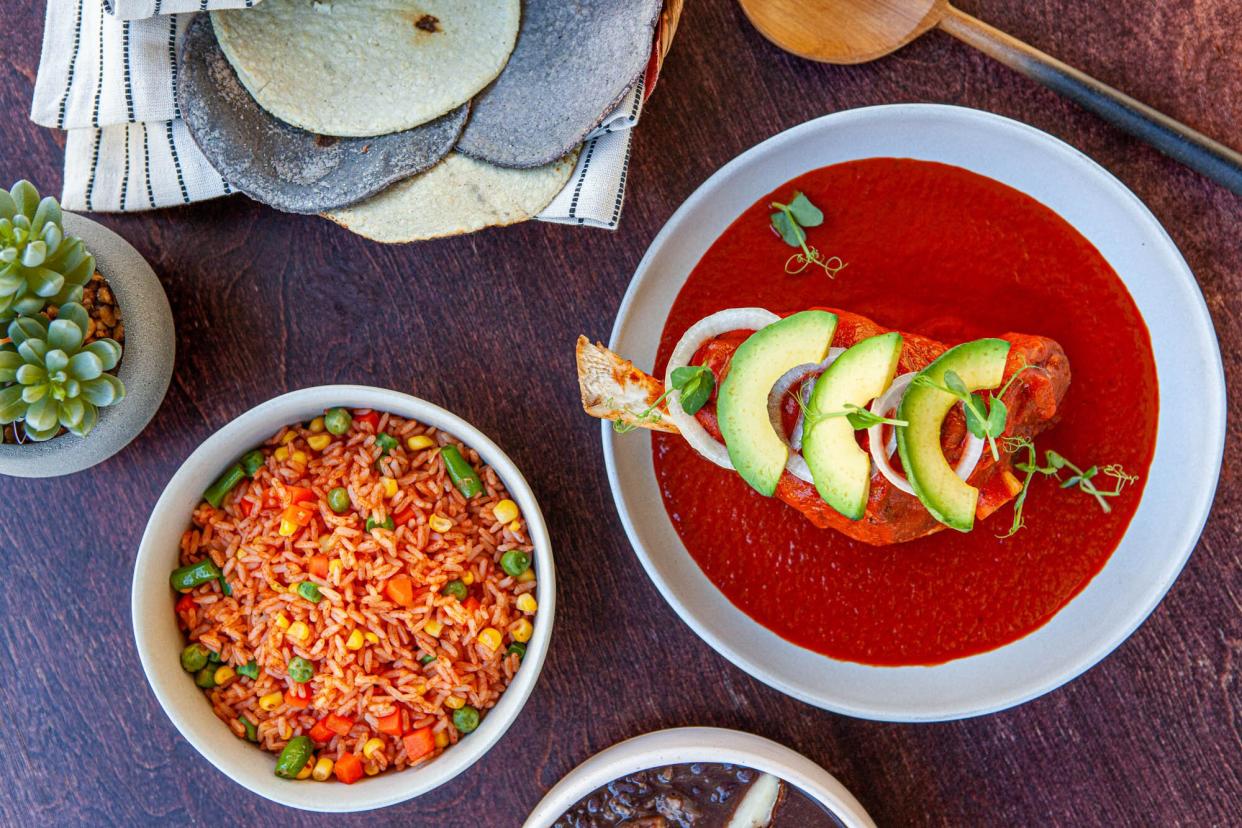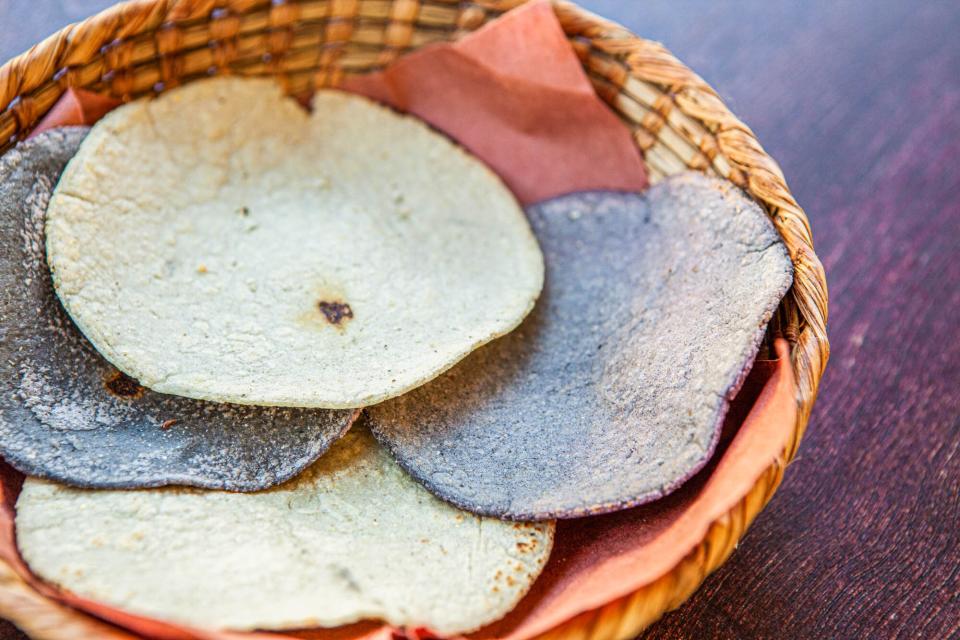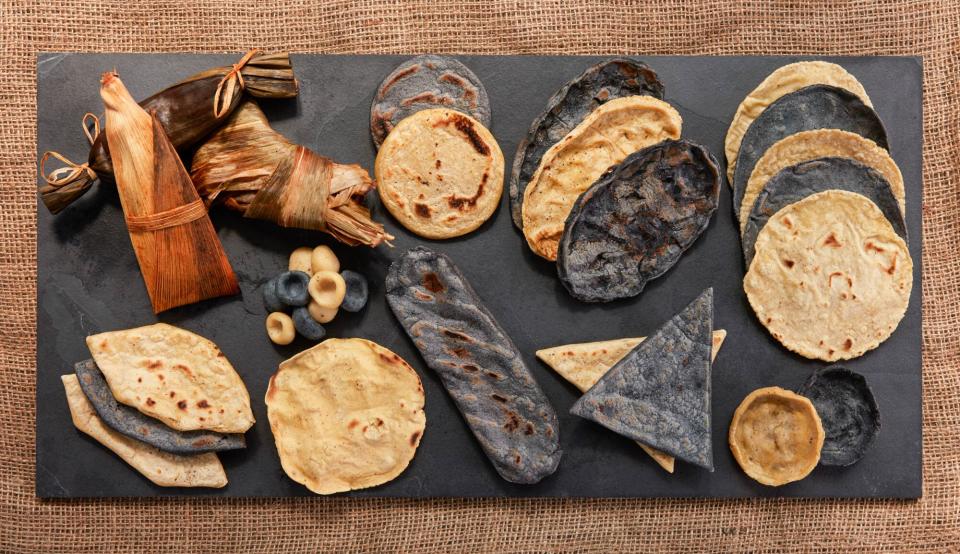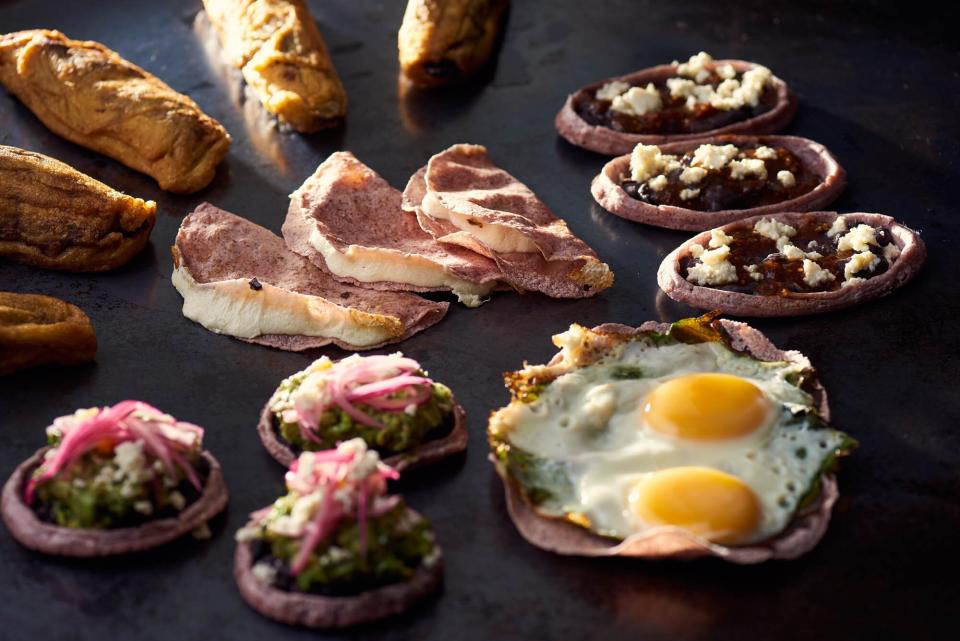A Return to Indigenous Mexican Cooking in New York City

Marconi Gonzalez
Activist and chef Yajaira Saavedra, of Oaxacan restaurant La Morada in the South Bronx, is tired of seeing restaurants misrepresent Indigenous cooking.
"It really bothers me seeing people throwing 'mole' around like it is another ranch dressing, rather than a traditional meal," says Saavedra. "It has history involved in it. It's very meaningful. If we can at least give credit where credit is due, and acknowledge those foods are made by Indigenous people and belong to Indigenous people, that could help build a [consciousness]."
Mexican cuisine, if you can even categorize it, is a blend of Spanish cuisine and Indigenous ingredients and techniques that predate European colonization. It is both Old and New World. Yet many diners unwittingly oversimplify Mexican food as a rotating combination of beans, tortillas, meat, and cheese. Indigenous gastronomy is mostly left out of the conversation—even in the most sophisticated dining capital of the country, New York City.
Many of the Mexican foods we eat, like mole, have Indigenous origins that are overlooked or erased entirely. Mole, a sometimes chocolate- and chile-based sauce, is enormously complex. Not only in terms of the amount of ingredients and spices it uses, but also the length of preparation it requires, which can go on for days and involves entire pueblos. Traditionally, Indigenous Mexican women would toast and grind their fresh spices by hand: dried chiles, peanuts, sesame seeds, chocolate, cinnamon, anise, and more. Mole comes from the Indigenous Nahuatl word mōlli, meaning "sauce." Unsuspecting diners might have already seen this Indigenous word as part of the etymological root of the guacamole.
In the Bronx, Saavedra and her sister, sous chef Carolina, are co-owners of the female-, undocumented-, and family-run restaurant La Morada, where they work alongside their mother, Natalia. Their family is Indigenous, and they've carefully preserved the recipes that were handed down by generations (including their famed mole) from the mountainous town of San Miguel Ahuehuetitlán in northwestern Oaxaca, bringing them to life in the south Bronx. They strive to honor their Indigenous ancestors through their menu.
La Morada is joined by a growing number of New York City Mexican restaurants that are centering Indigenous practices and ingredients. However, there remains a large gap in awareness. "I don't think New Yorkers know what Indigenous food is," says Carolina. "You know how Americans think Mexican food is Taco Bell? Even if it was explained to their face, Indigenous food is so disconnected from Mexican food and alway seen as lesser than."

Marconi Gonzalez
La Morada makes a point to label the Indigenous foods on its menu. El sope is an Indigenous dish found across many New York City restaurants that diners might not know is actually Indigenous. At La Morada, el sope is a flat fried masa base with a lip and toppings like beans, cheese, and seasonal ingredients. "Seasonality is an essential part of Indigenous cooking," says Carolina.
Torpedo-shaped tlacoyos and thin crispy tlayudas offered at La Morada are also Indigenous. "Tl" is the derivative of corn, says Carolina, in the Indigenous language, so a dish that begins with "ty" is a meal based on corn. Sun-dried chilaquiles were created by Indigenous people as a way to preserve any extra tortillas. A molcajete is actually the Indigenous vessel that green and red Mexican salsas are made out of. La Morada offers the vessel and fresh produce as a part of their menu.
"There are no plates, forks or knives in Indigenous cooking," says Carolina. "Your tortilla is your napkin and fork."
The Mother of Mexican ingredients is maíz, which is native to the Oaxacan state, where first evidence of its domestication are rooted in the Balsas River Valley as far back as 9,000 years ago. In fact, corn is the main vehicle for many of the NYC chefs who are spotlighting Indigenous Mexican cooking.
Chefs Zack Wangeman (El Cellar de Can Roca, Per Se) and Jesus Perea (Cosme, Pujol, Cacao Prieto) of Sobre Masa in Williamsburg, Brooklyn, strive to educate the public about Indigenous cuisine and its essential place in Mexican food, particularly through the culture of corn. Perea is from Puebla and raised in the Bronx, while Wangeman is from Oaxaca with a father from the United States and mother from Michoacan. They are hyper-focused on their masa: The corn is sourced from producers in Mexico and nixtamalized in-house. (Nixtamalization is an ancient process of steeping corn in alkaline water, cooking it, and grinding it into flour that is then used to make items such as tortillas, quesadillas, tacos, memeles, tetelas, and tlayudas.)

Matt Black
Despite the labor intensive work of nixtamalization, Wangeman and Perea do not take shortcuts. They buy their mole from Teotitlan del Valle since it's impossible to source the right ingredients in New York City. They recently did a series of Fundraisers with Fundación Tortilla to try and save some very old popping corn seeds.
"We try to mix it up by offering something familiar with unfamiliar things," says Wangerman. "We have tlacoyos which are filled with faba bean purée that is seasoned heavily with avocado leaf. Or empanada of mole amarillo is just as if you would have it in Oaxaca. For dinner, we have molotes and mole negro."
New to the New York City restaurant scene is Kuxé, another restaurant that aims to honor Indigenous recipes on its menu. Located in Greenwich Village in the former Toloache space, it's the latest concept from chef Julian Medina. The restaurant is an authentic fonda (like a tavern or small inn) named after the Indigenous Totonac Mexican word for corn. Kuxé isn't strictly Indigenous cooking, but Medina frequently uses pre-Hispanic ingredients on his menu, which highlights cocina de pueblo (village cooking) and recipes from each of the team members.
"At Kuxé, we prepare Indigenous ingredients in approachable and familiar ways and our hope is that our guests will better understand these ingredients," says Medina. That means using Indigenous or pre-Hispanic ingredients like corn, moles, chiles, and nopales, and using traditional cooking methods when possible. Their mole poblano uses four different kinds of chiles, cinnamon, chocolate, and platanos.
They also make their own masa for tortillas, machetes, and picaditas with ingredients imported directly from Oaxaca using a molino, the traditional corn grinder, as well as nixtamalization.
Wangeman doesn't think New Yorkers are familiar with Indigenous food specifically because "...it's just not that available." Cilantro, which is very much associated with Mexican cooking, is from southeast Asia, he explains. Herbs related to Indigneous Mexican food are hoja santa, epazote, papalo, chepil, and hierba de conejo, to name a few.
"Half of those aren't even available [here]," he says. "I think it's mostly a lack of information that is the problem. It's such a vast cuisine. Even after growing up in Oaxaca, every time I go to the market I learn about a new chili or herb I had no idea existed."

David Katz
Medina shares that while there are all different types of Mexican restaurant concepts in New York City, they are mostly "just inspired by Mexican ingredients or flavors."
Carolina, of La Morada, feels that there is an active erasure of Indigenous cooking traditions. "Chefs and the media should take the blame — people don't do their research," she says. "It is a conjunction of things that cause erasure. It is the onus of the chef to educate the diners. And they don't do it."
In order to inform the public herself, she promotes a "tableside education" approach to Indigenous cuisine, similar to how a sommelier explains the origins, varietals, and terroir of a wine while pouring a glass for a customer in detail. "It takes 30 seconds to explain. But no one does it," says Carolina, who also works as the Community Education coordinator at Blue Hill at Stone Barns.
Beyond educating the public about Indigenous cuisine, Carolina is committed to raising awareness about the lived experiences of Indigenous people—the people who preserve the foodways from which people profit.
"If your intention is capitalism from cooking food from a culture that is not your own, put money where your mouth is and put that capital back to the people, farms, and farm workers," she says. "You are stealing our recipes, not even honoring the fact that we are going through a silent genocide right now. The people that created mole and tortillas are facing the nastiest battle with corporations and struggle for access to clean water and produce not tainted by pollution."
She continues, "By chefs taking from a culture that is not their own and not speaking about it, explaining where it comes from or giving Indigenous peoples credit — what else are you doing to help these people out while you make a profit?"

